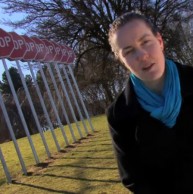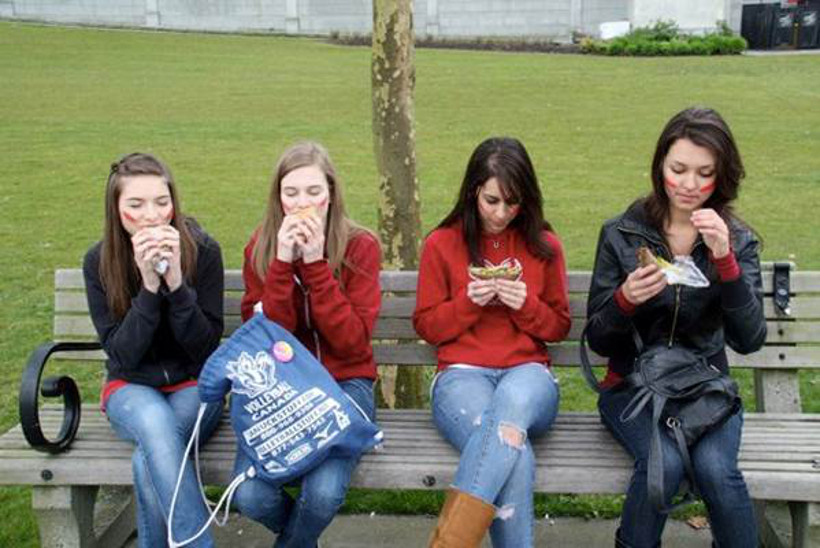The Stop
Arts Education, Language Arts, Mathematics, Planning, Physical Education, Social Studies
Sculpture Title:
The Stop
Learning Lens:
Health and Social Education
Curriculum Access:
Art, Career and Personal Planning, Counselling/Psychology, Drama, English, ESL, Language Arts, Math, Physical Education, Science, Social Justice, Social Studies, Home Economics, Applied Skills
Big Idea:
Mindfulness
Guiding Question:
How can we practice mindfulness in our everyday lives?
Strategies and Approaches:
Teamwork; Socratic Questioning; informal assessment, prompting, drama exercises; experiential learning; critical thinking; information gathering.
Background for Students:
Michael Zheng provokes us to adopt alternative views of our surroundings as we consider our world full of signs and explore the importance these icons hold in our daily lives. Every day we pass by an astonishing array of signs and symbols that tell us what to do, where to go, where we are, and pretty much any other pertinent information. The STOP challenges our understanding of features such as the stop sign by placing the viewer in a situation that interferes with our typical perception of what this object represents. We have come to view the stop sign as an authoritarian figure. We abide by its demands within the context of our urban framework. In this challenge we ask the student to stop on their own terms and change our patterns of thought to promote appreciation of one’s self and life.
Informal Assessment:
Through discussion, ensure students form an expanded meaning of ‘stopping for a time out.’ Encourage them to think about practicing mindfulness in their everyday lives. Have them think about the multiple causes that can lead to stress, depression, fatigue or self-depreciating behaviours.
Materials:
None required
Curricular Challenge:
15-20 mins, Open/Reflect: Welcoming Multiple Interpretations
- Students are encouraged to disengage from their recent experience and their busy surroundings to practice mindfulness.
- Direct students to ‘mindfully’ (quietly/individually) explore the piece and develop their own interpretation. More information on mindfulness for the classroom can be found here.
- Direct each student to share their interpretation of the piece without judgement.
- Connect students’ individual interpretations to the background information provided above.
30 mins, Challenge: Go, Go and Stop!
1. This is a version of the game ‘Go Go Go Stop!’ Have the students line up at a designated starting area and have the leader (teacher) stand at the opposite end.
2. With their back turned towards the students, the leader will repeat the instructions: “go, go” until they decide they want the students to “stop.” On stop, students must freeze immediately and the leader will call out a phrase in which the students must all respond to.
For example:
Stop! Everyone yell out their favourite sport.
Stop! If you were bored, what could you do?
Stop! Who are your five favourite people in the world?
Stop! Where is your favourite place?
Stop! What makes you laugh till you cry?
Stop! Name one thing you can’t live without.
Stop! Name one thing you’re grateful for.
3. Once students have reached the leader, debrief their answers. See below for suggestions. Try the activity again, incorporating body movements, actions, phrases. For example, Stop! Act like your favourite animal. Stop! What would your face look like if someone surprised you with a nice gesture? Stop! What would you say if you saw scenery that moved you?
Debrief: Ask students to consider the following: when was the last time they stopped to smell a flower? When was the last time they stopped to taste the food they ate? Ask students to note that the way individuals practice mindfulness are unique and personal, however all healthy strategies have the calming effects to ground and center the self. Students should be able to understand that it is important to take time throughout the day to reflect upon and appreciate their gifts and surroundings, in order to practice mental wellness.
Related Material
 Mindfulness and Authority
Mindfulness and Authority